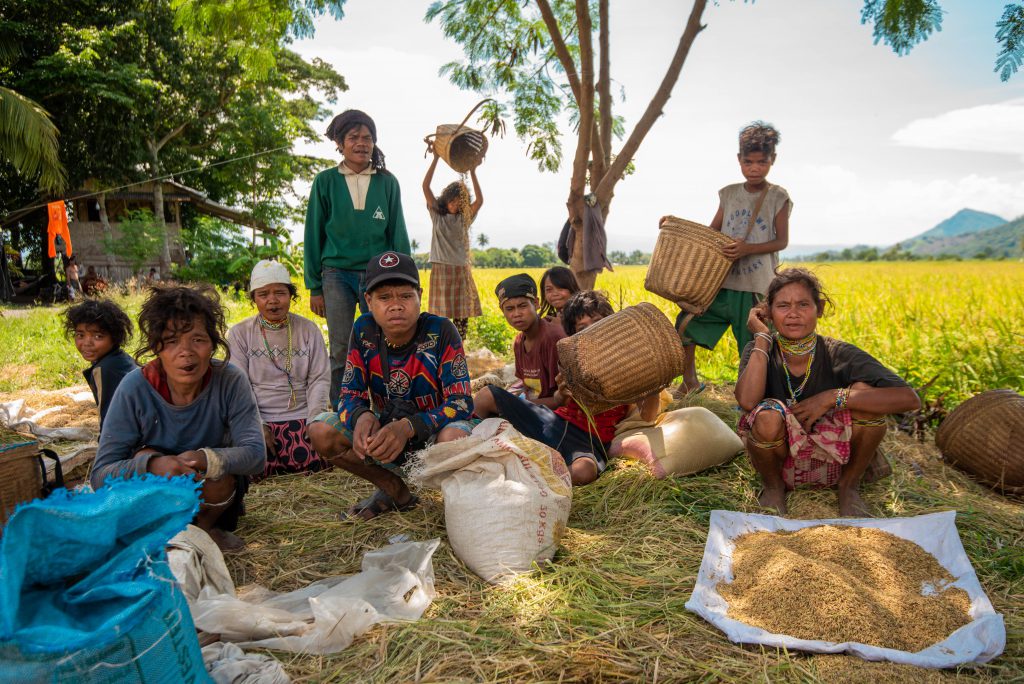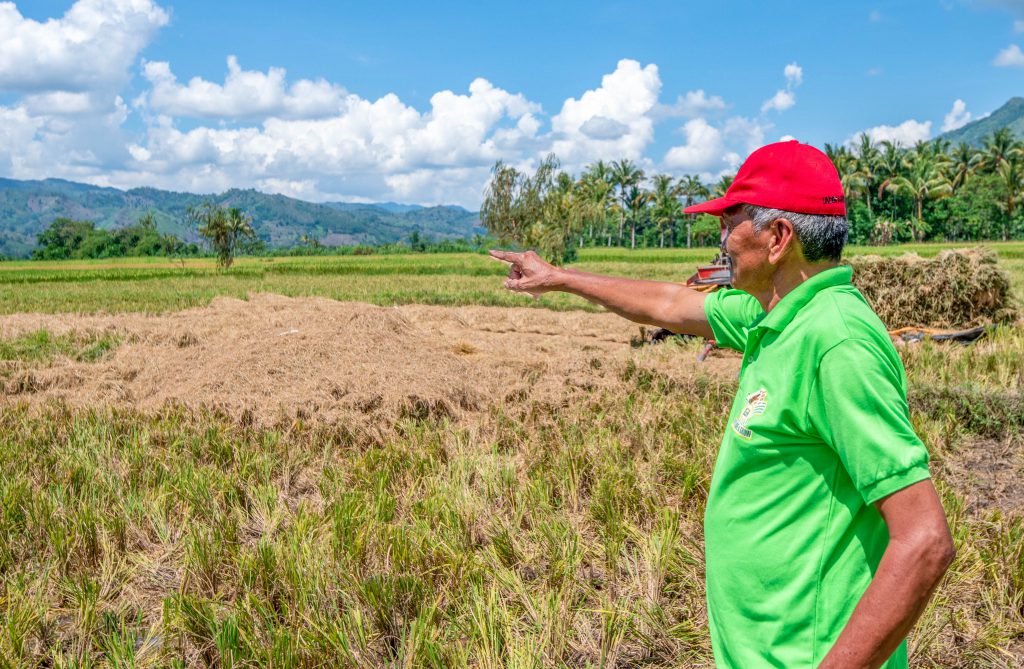Romeo Gamiao, 63 of Vintar, Valencia City, Bukidnon is born and raised in the rice fields. Together with his fellow farmers, he had experienced the lows in farming – losing almost all of his harvest. But these tests were resolved not through government interventions, but through a help that’s easily reached and free – bayanihan
Farming in Vintar used to be easy. Soil was healthy, harvest was abundant, and rice was planted three-four times a year.
“We applied minimal amount of fertilizer because we thought that our fields don’t need it. Harvest was full and the land was never been idled,” he said.
However, years came when they noticed that harvests gradually declined and pests began to infest their crops. Tungro attacked their crop, and their usual farming skills didn’t help to combat the outbreak.
Vintar farmers created a strategy to control the infestation. They decided that every farm zone should have a terminal irrigation cut-off every 3 years for 30-45 days to stop pests build-up. It helped for a while, but other pests caused devastation.
For four years starting 2014, Brgy. Vintar was infested with black bug; registering the lowest yield in Region 10 at less than 100cav/ha.

To rise from the tragedy, rice farmers and agriculture officers gathered and planned to revive the abundant harvest.
“I had three suggestions. I requested to keep the zonal cut-off every three years to allow the land to rest and cut the life cycle of pests. I also recommended that we only plant twice a year and that all of us has to observe a terminal irrigation cut-off. It means that, when the rice plant nears its flowering stage, one zone should have a cut-off so that plans of preparing the land immediately after harvest are avoided,” Romeo explained.
After intensive deliberation, Romeo’s suggestions were accepted by his co-farmers and approved by the agriculture office in Valencia City. The Regional Field Office of the Department of Agriculture also helped in the implementation of his proposals and in training farmers. Every farmer followed the recommendations, and eventually, harvest improved.
“For 4 years we have suffered. But thru cooperation, proper field management, and enhanced farming knowledge, we now gain 160-180cav/ha every harvest!” Gamiao exclaimed.
The collaboration among Vintar farmers contributed in winning 2018 Rice Achievers Award placing Bukidnon as one of the country’s top rice-producing provinces in 2019. All now is well.





